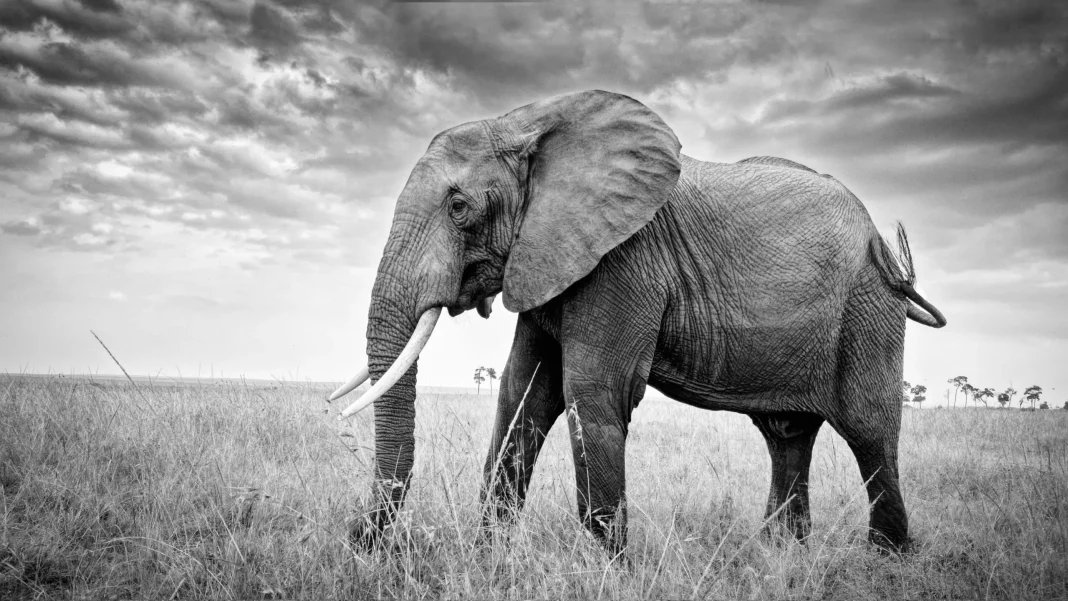In the Congo Basin, the second-largest rainforest in the world, the African forest elephant population has been in drastic decline for decades. This decline is the result of habitat loss caused by deforestation and climate change, along with rampant poaching.
We can observe the beneficial environmental effects of these species starting to disappear. As a keystone species in the habitat, the dwindling presence of the elephants has major implications you might not imagine. African forest elephants have been shown to increase carbon storage in their habitats. They are “ecosystem engineers” according to the World Wildlife Fund , clearing out lesser vegetation and making room for stronger, more resilient, flora to thrive.
While we know these changes will occur as the elephant population shrinks, actually seeing it happen presents challenges. The World Wide Fund for Nature-Germany aims to track and identify individual elephants to count them. With help from IBM, the WWF will be able to use a system of camera traps connected to software that enables automatic tracking as opposed to manual tracking.
Augmenting our vision with tech
That is where computer vision can serve as a fresh set of eyes. IBM announced earlier this year that it would team with WWF to pair camera traps with IBM Maximo® Visual Inspection (MVI) to help monitor and track individual elephants as they pass by the camera traps.
“MVI’s AI-powered visual inspection and modeling capabilities allow for head- and tusk-related image recognition of individual elephants similar to the way we identify humans via fingerprints,” explained Kendra DeKeyrel, Vice President ESG and Asset Management Product Leader at IBM.
These capabilities allow for not only counting or spotting the individual elephants, but also tracking some of their behaviors to better understand their movement patterns and impact in the ecosystem. MVI particularly offers help in automating the process of identifying these elephants instead of having staff manually look at the images. Additionally, the AI’s advanced visual recognition capabilities can pull the identity of an elephant from an image that is blurry or incomplete.
“Counting African forest elephants is both difficult and costly,” Dr. Thomas Breuer, WWF’s African Forest Elephant Coordinator, said. “The logistics are complex and the resulting population numbers are not precise. Being able to identify individual elephants from camera trap images with the help of AI has the potential to be a game-changer.”
Strengthening our connection to the natural world
As more about the movement and migration of the African forest elephant is gleaned, more additional information can be pulled from our increased understanding of how the species is behaving and interacting with its environment. “IBM is exploring how to leverage IBM Environmental Intelligence above ground biomass estimates to better predict elephants’ future locations and migration patterns, as well as their impact on a specific forest,” DeKeyrel said.
That includes determining how much the African forest elephants can help with mitigating climate change. It’s understood that the presence of elephants helps to increase the carbon storage capacity of the forest. “African forest elephants play a crucial role in influencing the shape of the forest structure, including helping increase the diversity, density, and abundance of plant and tree species,” Oday Abbosh, IBM Global Sustainability Services Leader, explained. It’s estimated that one forest elephant can increase the net carbon capture capacity of the forest by almost 250 acres, the equivalent of removing a full year’s worth of emissions from 2,047 cars from the atmosphere.
Having a more accurate image of the elephant population allows for performance-based conservation payments, such as wildlife credits. In the future, this could help enable organizations to better assess the financial value of nature’s contributions to people (NCP) provided by African forest elephants, such as carbon sequestration services.
We know the animal kingdom is constantly shaping the planet, and being affected by our own activity even when we can’t see it. Due to continuing breakthroughs in technology, we’re increasingly getting a clearer picture of the world of wildlife that was previously difficult to capture. When we can see it, we can react to it, helping to protect species that need help and strengthening our connection to the natural world.
“Our collaboration with WWF marks a significant step forward in this effort,” Abbosh said, “By combining our expertise in technology and sustainability with WWF’s conservation expertise, we aim to leverage the power of technology to create a more sustainable future.”
Learn more about IBM Maximo Visual Inspection
Sign up for a demo to see the possibilities
Was this article helpful?
YesNo


